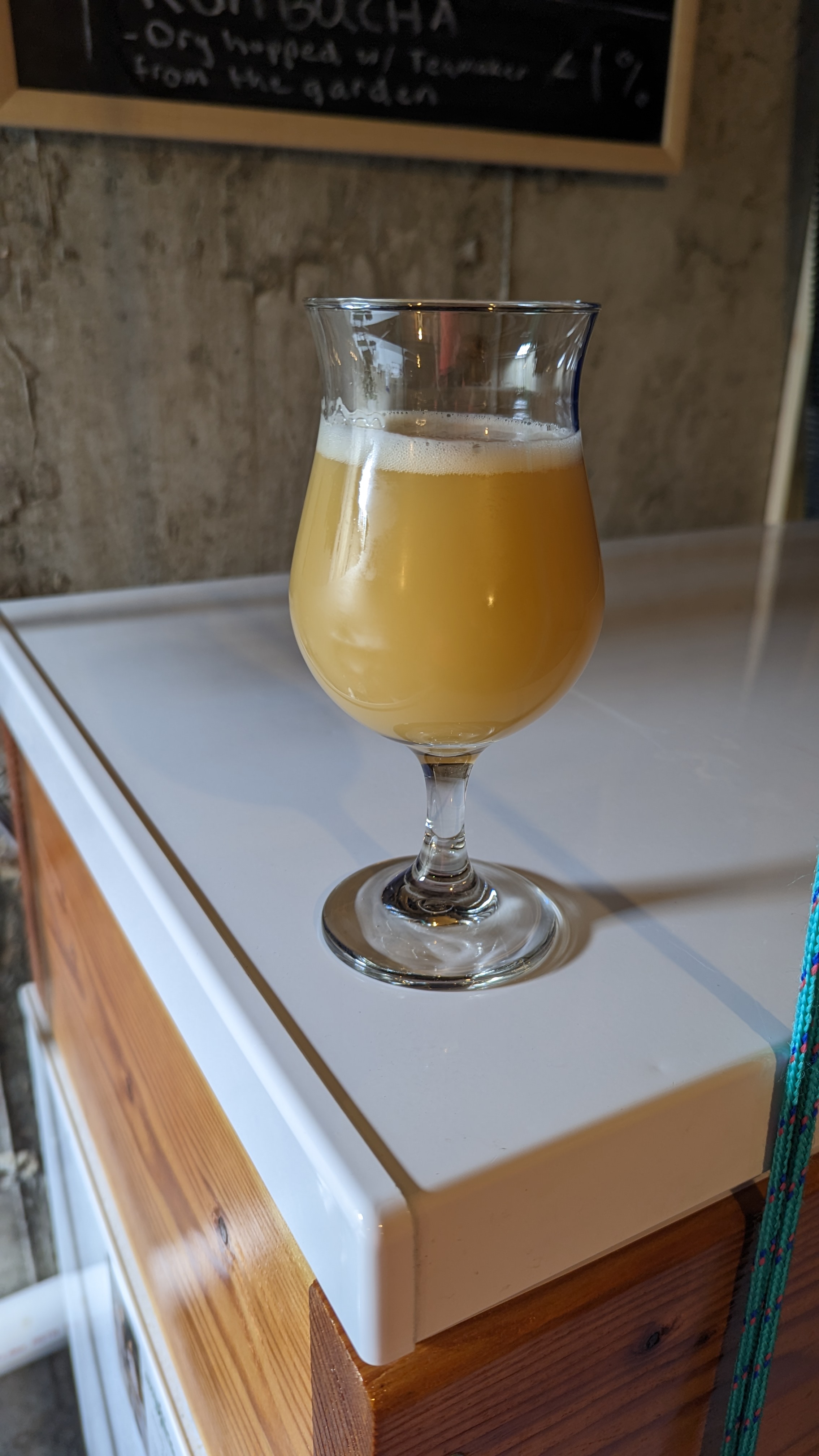Edit: I don't think my direct image upload worked: https://postimg.cc/tZS8wf04
I've given the name "hybrid IPAs" to IPAs that were sort of the pioneers of neipas. Think Heady Topper, Focal Banger, Julius, or Pliny the Elder. The Alchemist is my main inspiration. These beers are much more bitter than a NEIPA, are loaded up with sulfates, may or may not have oats/wheat (I'm choosing not to add any), and aggressively dry hopped. I love me a good NEIPA, but I have decided I want to brew a more west coast style NEIPA. This is my first iteration and was brewed with the leftover hops and Kveik I had on hand.
After a few days in the keg, this beer came out nicely but still isn't quite where I want it. I was a little under on my efficiency and ended up at 7.5% abv. I think it is a little too bitter for the fruity hops used. It needs something a little more dank to hold up to the bitterness. It could use to be a bit punchier as well as far as the hop bill is concerned. It's hoppy, but not quite the same hop saturation I am looking for. Over time I've come to believe that chlorides are overrated. Load up on sulfates in all IPAs if you ask me. The nose is mangos, pears, and orange, and the finish is like bitter tang in a good way. Even though it's bitter, it's remarkably easy to drink. This keg won't last long.
Next time, I will be using verdant ale yeast and a different mix of hops. Likely Simcoe, ctz, and Amarillo, maybe some citra. I also got some cryo Amarillo which should add some real kick to the dry hop.
Recipe for this beer:
Double IPA
8.2% / 17.7 °P Recipe by
All Grain
BrewZilla / RoboBrew 35L 68% efficiency
Batch Volume: 5.47 gal (Kettle) Fermenter Volume: 5 gal
Boil Time: 60 min
Mash Water: 6.45 gal
Sparge Water: 1.08 gal Total Water: 7.53 gal Boil Volume: 6.22 gal
Pre-Boil Gravity: 1.056
Vitals Original Gravity: 1.073
Final Gravity: 1.014
IBU (Tinseth): 153
BU/GU: 2.10
Color: 6 SRM
Mash Temperature — 149 °F — 60 min
Malts (13 lb) 13 lb (92.9%) — Thomas Fawcett Pale Malt, Maris Otter — Grain — 2.8 °L Other (1 lb 8 oz) 1 lb (7.1%) — Sugar, Table (Sucrose) — Sugar — 1.3 °L 8 oz — Briess Rice Hulls — Adjunct — 0 °L Hops (12.13 oz) 1.83 oz (71 IBU) — Magnum 11.2% — Boil — 60 min
1.5 oz (43 IBU) — Idaho #7 12.5% — Boil — 20 min
1.5 oz (25 IBU) — Mandarina Bavaria 7.2% — Boil — 20 min
1.5 oz (9 IBU) — Idaho #7 12.5% — Aroma — 20 min hopstand
1.5 oz (6 IBU) — Mandarina Bavaria 8.5% — Aroma — 20 min hopstand
4.3 oz — BRU-1 14.9% — Dry Hop — 2 days
Hopstand at 176 °F
Miscs 2 g — Calcium Chloride (CaCl2) — Mash
12 g — Gypsum (CaSO4) — Mash
0.43 g — Calcium Chloride (CaCl2) — Sparge
2.6 g — Gypsum (CaSO4) — Sparge
Yeast Kveik Blend 75% Fermentation Primary — 68 °F — 14 days
Carbonation: 2.4 CO2-vol Water Profile Ca2+ 140 Mg2+ 0 Na+ 9 Cl- 48 SO42- 277 HCO3- 9

Medaglia d'oro espresso in a 1 cup moka pot. I like it better than bustelo since it's 100% arabica.